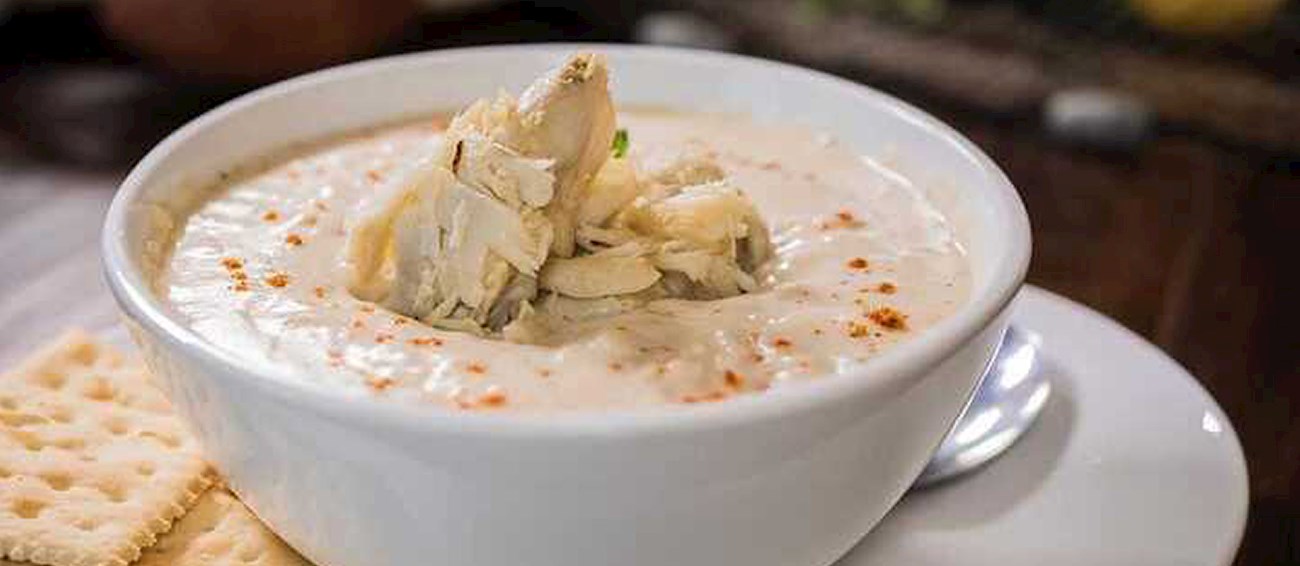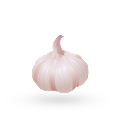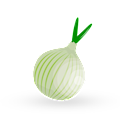MAIN INGREDIENTS
Kepiting saus Padang is a traditional seafood dish. It consists of crab that's served in spicy Padang sauce. Mud crabs or blue crabs are usually used for the preparation of this dish. They're boiled in hot water until fully cooked (they will turn red), then shortly simmered in the sauce.
The spicy Padang sauce is usually made with a combination of shallots, garlic, ginger, candlenuts, chili peppers, turmeric, onions, kaffir lime leaves, bay leaves, ketchup, and oyster sauce. It's often enriched and thickened with lightly beaten eggs.
She-crab soup, somewhat of a cross between a bisque and a chowder, is a soup made with heavy cream or milk, crabmeat, sherry, fish or crab stock, and roe—a key ingredient in the dish that improves the flavor and is responsible for the color.
The soup is thickened with a roux or puréed boiled rice, and it is usually seasoned with either mace, onions, or shallots. A regional specialty of Tidewater, Virginia, the South Carolina Lowcountry, and Georgia coast, it was first introduced to these parts by the Scottish settlers in the 1700s in the form of partan-bree, a famous seafood bisque, but it was not until the 1900s that the soup gained its present-day form.
MOST ICONIC She-crab soup
View moreMAIN INGREDIENTS
No other dish represents Maryland's cuisine better than the crab cake - a fishcake consisting of crab meat and ingredients such as mayonnaise, eggs, bread crumbs, milk, and seasonings. The blue crab is considered to be the ideal choice of crab for the cakes.
They are usually served on a bun, accompanied by french fries, coleslaw, or macaroni salad. Originally, the dish was first prepared by the Natives, long before the arrival of the settlers. It was one of the first dishes that were adopted by the Chesapeake Bay region settlers.
MOST ICONIC Maryland Crab Cakes
View moreMAIN INGREDIENTS
Gejang is a Korean dish consisting of marinated crabs. The traditional marinade is usually based on soy sauce, and it goes under the name gejang gejang, while its spicier counterpart is known as yangnyeomgejang. The crabs are always alive when they are marinated, and it is recommended to prepare it with female crabs since they are usually filled with roe.
The dish is traditionally served with rice on the side.
MAIN INGREDIENTS
Dungeness crab cake is a specialty from Washington that features the succulent meat of the Dungeness crab, a crustacean inhabiting the waters of the Pacific Ocean on the West Coast of North America. This dish is typically made by combining Dungeness crabmeat with mayonnaise, red bell peppers, celery, onions, herbs, panko breadcrumbs, seasonings, and eggs, and then shaping the resulting mixture into round cakes.
The crab cakes are rolled in additional panko breadcrumbs and fried or baked until crispy. The meat of the Dungeness crab is renowned for its sweet flavor and its delicate texture. The dish is typically served as an appetizer, a snack, or a main meal for lunch or dinner.
MAIN INGREDIENTS
Black pepper crab is the unofficial national dish of Singapore, made by stir-frying crab pieces with black pepper, garlic, shallots, and oyster sauce over high heat. The dish is seldom prepared at home, but people can easily find it at numerous street stalls and seafood restaurants.
Once the crab is cooked, it is often garnished with coriander leaves and paired with rice on the side.
MOST ICONIC Black Pepper Crab
View moreMAIN INGREDIENTS
Stone crab claws are a popular seafood dish, particularly in areas where stone crabs are native, such as Florida in the United States. Stone crabs are unique in that they are often harvested for their claws alone, while the rest of the crab is returned to the ocean alive.
Since stone crabs can regenerate their claws, this practice is more sustainable. The claws are large and contain a good amount of meat, which is sweet, tender, and considered a delicacy. Once the claws are harvested, they're usually cooked right away to preserve their freshness.
MAIN INGREDIENTS
Crab cake is a popular American type of fishcake consisting of shellfish meat, breadcrumbs, eggs, and flavorings such as mustard, Worcestershire sauce, and fresh herbs. The concept of minced fish meat combined with other ingredients dates back to the ancient times when ingredients were scarce.
It is believed that a type of crab cake was first introduced to the early colonies by English settlers. There are numerous recipes for crab cakes from the 19th century, and many of them combined bread crumbs and spices, while some of them were fried.
VARIATIONS OF Crab Cake
MOST ICONIC Crab Cake
View moreMAIN INGREDIENTS
Like many other dishes in Asia, chilli crab started as a street food item, but it has eventually become so popular that today it is considered to be the national dish of Singapore. It consists of a stir-fried crab covered in a succulent, spicy sauce.
The story of chilli crab's origin is a well-known anecdote - it was invented in the 1950s by Cher Yam Tian, who wanted to modify her stir-fried crab recipe by adding bottled chili sauce into the dish. The result was so delicious that her family persuaded her to start selling the dish, so chilli crab began its way to become the signature dish of Singapore.
MOST ICONIC Chilli crab
View moreMAIN INGREDIENTS
Bún riêu is a crab-based Vietnamese noodle soup. The dish is made in several versions, but the most popular one is made with a tomato base and goes under the name bún riêu cua. The soups are prepared with different broths, but they are always infused with crab paste and come served with vermicelli noodles, while the toppings typically include crab meat, pork, tofu, tomatoes, blood jelly, and a selection of fresh greens such as perilla or bean sprouts.
The combination of sweet and sour flavors make bún riêu one of the favorite noodle dishes in the country.
MOST ICONIC Bún riêu
View moreTasteAtlas food rankings are based on the ratings of the TasteAtlas audience, with a series of mechanisms that recognize real users and that ignore bot, nationalist or local patriotic ratings, and give additional value to the ratings of users that the system recognizes as knowledgeable. TasteAtlas Rankings should not be seen as the final global conclusion about food. Their purpose is to promote excellent local foods, instill pride in traditional dishes, and arouse curiosity about dishes you haven’t tried.



















































